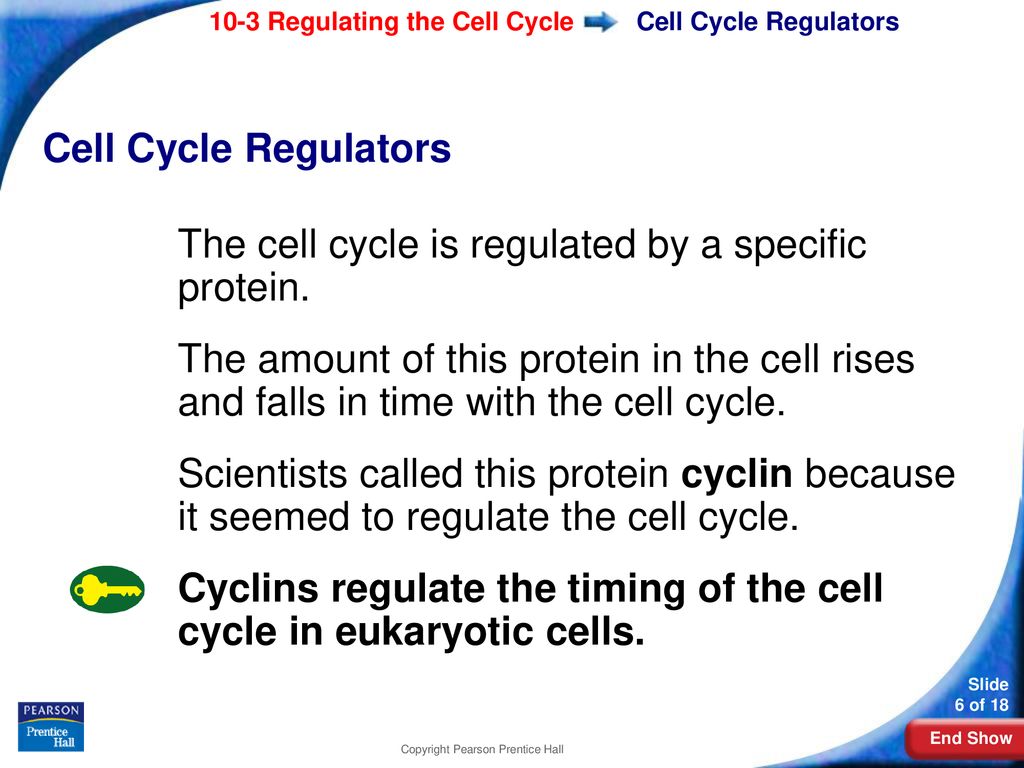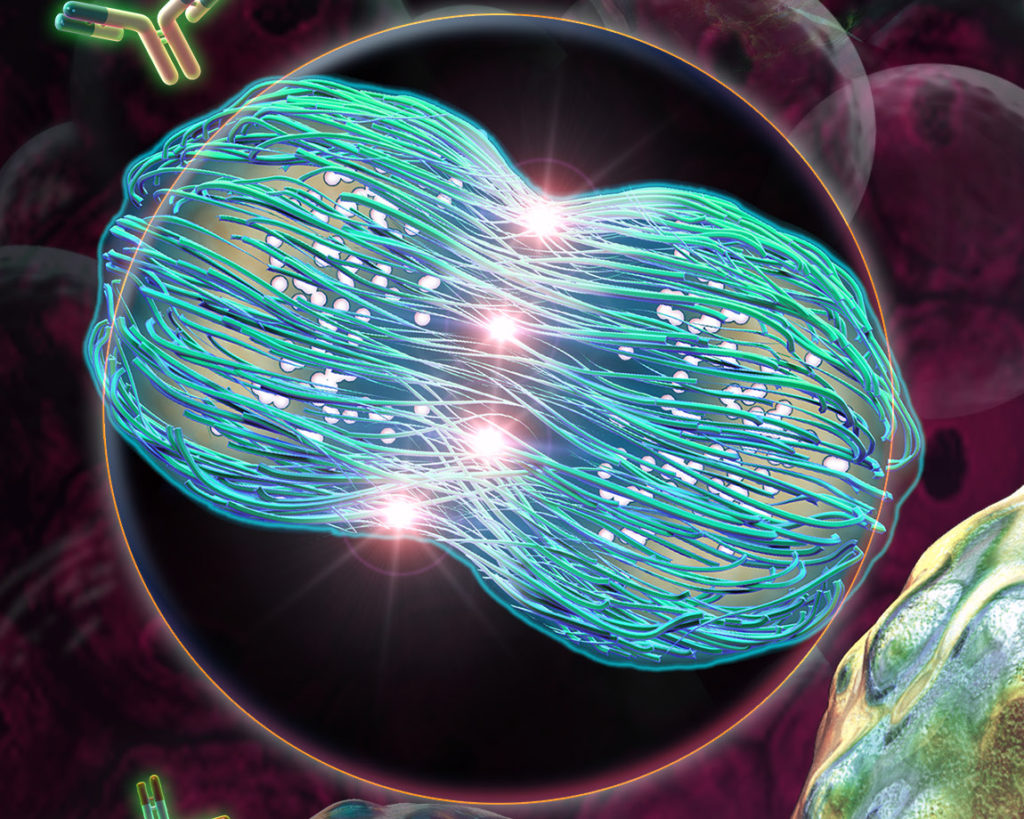Copyright Pearson Prentice Hall Biology Diagrams Key Regulatory Proteins. Cell cycle progression is controlled by regulatory proteins that act as molecular switches, responding to internal and external signals to either promote or halt division. Among the most significant regulators are cyclins, cyclin-dependent kinases (CDKs), and cell cycle inhibitors. Cyclins Cancer is characterized by uncontrolled tumour cell proliferation resulting from aberrant activity of various cell cycle proteins. Therefore, cell cycle regulators are considered attractive targets in cancer therapy. Intriguingly, animal models demonstrate that some of these proteins are not essenti … Dysregulation of the cell cycle and genetic alterations in cell-cycle regulatory proteins lead to uncontrolled cell proliferation in many solid cancer types, including BC [13,14], which is a frontier in biomedical research for designing synthetic inhibitors of CDKs as anticancer drugs . In this review, we focus on the roles of CDKs in cell

The E2F-dependent transcriptional network includes many genes that encode key proteins in cell cycle and DNA replication control but also genome protection mechanisms and growth. E2F-dependent

The cell cycle: a review of regulation, deregulation and therapeutic ... Biology Diagrams
The different cyclins and Cdks bind at specific points in the cell cycle and thus regulate different checkpoints. Figure \(\PageIndex{1}\): Activation of Cdks: Cyclin-dependent kinases (Cdks) are protein kinases that, when fully activated, can phosphorylate and activate other proteins that advance the cell cycle past a checkpoint. Cell-cycle proteins are the proteins involved in regulation and maintenance of the cell cycle of eukaryotic cells. These include kinases and cyclins that regulate movement between the three phases

a: Entry into the cell cycle is typically induced in response to mitogenic signals that activate signalling pathways such as the RAS pathway. These pathways eventually impinge on transcriptions factors such as MYC, AP-1 or β-catenin and lead to induction of a number of cell cycle proteins including D-type cyclins.

10.3C: Regulator Molecules of the Cell Cycle Biology Diagrams
Many cell cycle proteins are overexpressed or overactive in human cancers, in particular, D-type and E-type cyclins, cyclin-dependent kinases (CDK4, CDK6 and CDK2), Polo-like kinase 1 (PLK1) and
